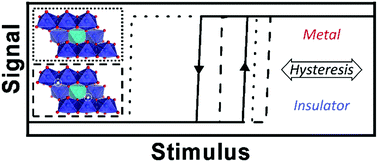Decoupling the metal–insulator transition temperature and hysteresis of VO2 using Ge alloying and oxygen vacancies†
Abstract
The metal-to-insulator transition of VO2 underpins applications in thermochromics, neuromorphic computing, and infrared vision. Ge alloying is shown to elevate the transition temperature by promoting V–V dimerization, thereby expanding the stability of the monoclinic phase to higher temperatures. By suppressing the propensity for oxygen vacancy formation, Ge alloying renders the hysteresis of the transition exquisitely sensitive to oxygen stoichiometry.

- This article is part of the themed collection: 2022 Pioneering Investigators


 Please wait while we load your content...
Please wait while we load your content...